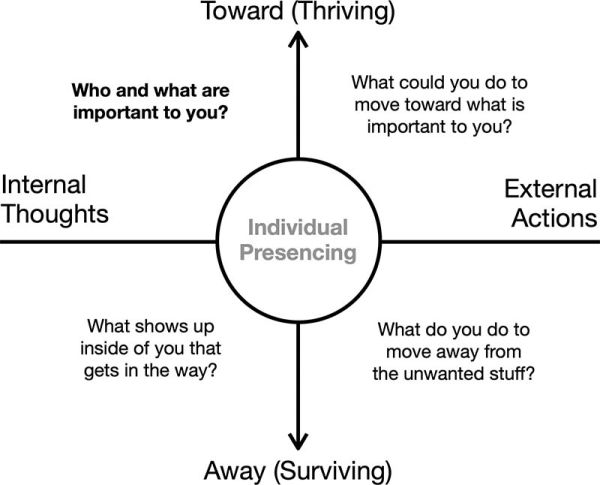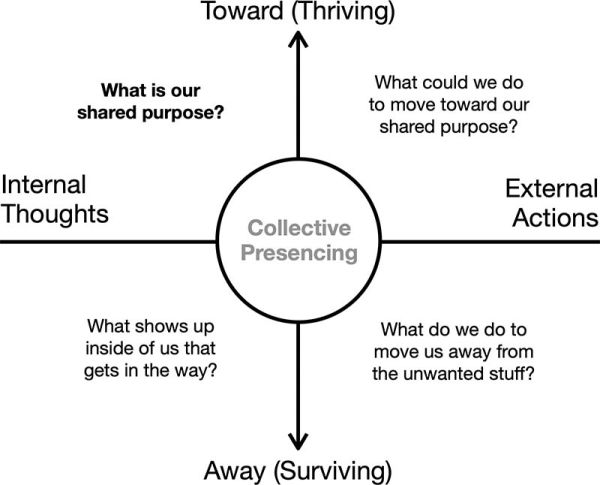
Prosocial is a community of practice oriented toward the welfare of others and society as a whole. It is a method for helping any group, anywhere in the world, work better together. It teaches us how to develop and act on our collective consciousness with purpose. It brings together cognition, cooperation, and culture into a flexible framework that can be used to help groups improve collaboration and cooperation in different contexts. The practice is known for mitigating the spread of the Ebola virus in Sierra Leone, Africa.
Prosocial is executed through what is known as the ARC (Awareness, Relationships, Culture) Process, which is based on these three considerations:
The underlying framework of Prosocial is the ACT (Acceptance & Commitment Training) Matrix, a graphical user interface to developing psychological flexibility. It is based on learning to discriminate between direct experiencing with internal thoughts, feelings and the senses, and external actions in the world (vertical line), and then the idea of sorting behavior into two directions called Towards and Away. The diagrams below reflect a version of Prosocial used with co-creation groups that already have a general shared vision, usually starting at the top left quadrant (Towards, Internal), then moving out from there.


Prosocial is based on eight Core Design Principles that are needed by most groups whose members must work together to achieve common goals. These principles are based on Elinor Ostrom's core design principles. Learn more about these principles in detail here.
A group functions best when its members clearly understand its purpose and perceive that purpose as worthwhile. A group also functions best when it offers a strong shared identity that helps group members understand who is in or out of the group, increases pride and pleasure in belonging, and guides and coordinates behavior through shared norms and values.